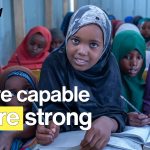The global fight against HIV/AIDS is at risk of unraveling as poorer countries grapple with the devastating impact of donor funding cuts—particularly from the United States—UNAIDS has warned in its latest annual report.
Launched in South Africa on Thursday, the 2025 report paints a grim picture: if current funding gaps persist, up to 6 million new infections and 4 million deaths could occur between now and 2029.
In 2025, only eight of 193 countries did not criminalise any of those groups or behaviours, or criminalise non-disclosure of HIV status, exposure or transmission, according to the report.
The number of people infected by HIV or dying from Aids-related causes in 2024 was the lowest for more than 30 years, according to the UNAids annual report, at 1.3 million and 630,000 respectively.

Progress was uneven – ranging from a 56% fall in infections since 2010 in sub-Saharan Africa to a 94% increase in the Middle East and North Africa. But coupled with scientific advances – such as twice-yearly drugs to prevent infection – the world had the “means and momentum” to end Aids as a public health threat by 2030, an internationally agreed goal, it said.
However, that has been “seriously jeopardised” in the early months of this year after sweeping US aid cuts that could undo decades of progress. In January, Donald Trump cut funding that had underpinned much of the global HIV response almost overnight.
Some countries have shown resilience by increasing domestic funding. But this is not enough to offset the severe losses in healthcare personnel and access to prevention tools, the report states.
The warning follows the Trump administration’s decision to cut key HIV/AIDS support, including reductions to PEPFAR—the President’s Emergency Plan for AIDS Relief—which has long been a lifeline for HIV response in sub-Saharan Africa.
Countries Step Up—But Can’t Fill the Gap
Several low-income nations have attempted to bridge the funding shortfall by increasing local spending on HIV programmes. However, UNAIDS says this is “far from sufficient” to address the scale of the crisis.
In countries like Mozambique, tens of thousands of health workers have been affected. Nigeria has also seen a dramatic fall in access to PrEP (Pre-exposure prophylaxis)—a vital drug that prevents HIV transmission—dropping from over 40,000 to just 6,000 new users monthly.
We are at a turning point,” said UNAIDS Executive Director Winnie Byanyima. If the world does not act swiftly and with unity, we risk losing two decades of progress.
Uganda’s Stakes in the Crisis
Uganda, long seen as a success story in HIV control, could also face setbacks. With significant portions of its national HIV budget still reliant on external donors, health experts warn that treatment disruptions and reduced outreach could fuel a rise in new infections, particularly among youth and vulnerable communities.
Dr. Henry Musoke, a Kampala-based HIV researcher, says:
Without predictable funding, we may see ARV stockouts, increased mother-to-child transmission, and reduced testing in rural areas.
A Call for Global Responsibility
UNAIDS has urged wealthier nations to recommit to global solidarity. It also emphasized the need for innovative financing, regional collaboration, and accelerated access to new technologies such as long-acting injectable PrEP.
South Africa, for instance, now funds 77% of its HIV response and is pushing to scale up national investments—an approach UNAIDS recommends for other nations with the capacity to do so.
Still, the agency insists that international support remains irreplaceable, particularly for fragile health systems in East and Central Africa.
Quick Facts: UNAIDS 2025 Report Highlights
- Potential consequences by 2029:
- 6 million new HIV infections
- 4 million AIDS-related deaths
- Cause: Major donor cuts, especially from the U.S.
- Impact: Staff layoffs, prevention program declines, ARV disruptions
- UNAIDS response: Calls for restored funding, local investment, tech innovation
The Bottom Line:
Without immediate, coordinated global action, the HIV/AIDS response could face a catastrophic reversal—hitting the poorest communities the hardest.















